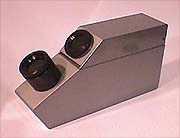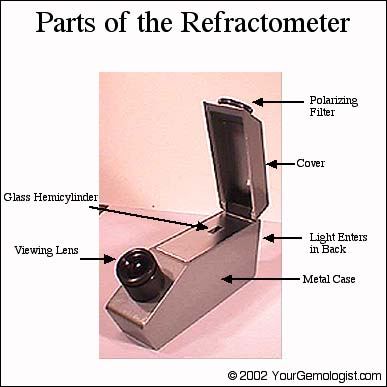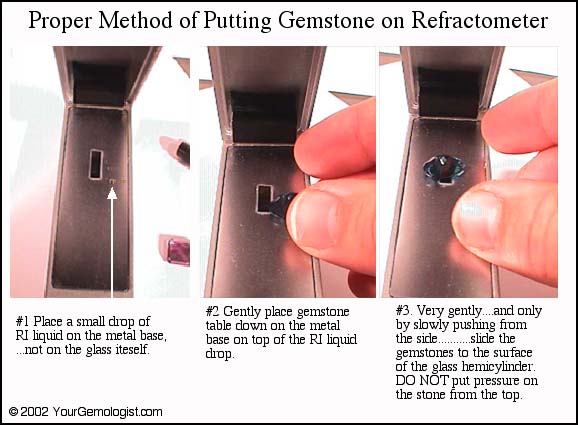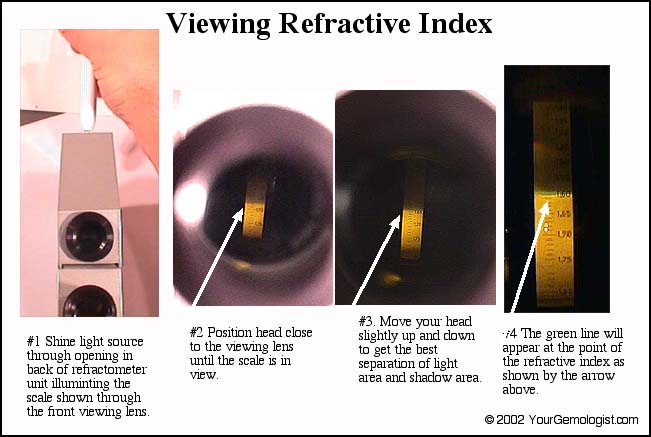Study of the Refractometer
Study of the Refractometer
General Information
 What is it?: This handy little piece of equipment tests a gemstone’s ability to slow down or bend light. The amount of slowing down it does to a beam of light is called the refractive index, which is a number assigned to a scale we will see in a minute. And while some gemologists think that a refractometer is used just for gemstone identification, truth is that long before it was used for the identification of gemstones, the refractometer was used to set prescriptions on eyeglasses, and (get ready for this) to tell when grapes are ready to be picked to make wine…based on the refractive index of the grape juice. For our purposes we will work with the idea of gemstones…although I know a lot of gemologists who work on their own to test a lot of wine. But enough of that…on to the study of the refractometer.
What is it?: This handy little piece of equipment tests a gemstone’s ability to slow down or bend light. The amount of slowing down it does to a beam of light is called the refractive index, which is a number assigned to a scale we will see in a minute. And while some gemologists think that a refractometer is used just for gemstone identification, truth is that long before it was used for the identification of gemstones, the refractometer was used to set prescriptions on eyeglasses, and (get ready for this) to tell when grapes are ready to be picked to make wine…based on the refractive index of the grape juice. For our purposes we will work with the idea of gemstones…although I know a lot of gemologists who work on their own to test a lot of wine. But enough of that…on to the study of the refractometer.

How does it work?: The refractometer works by the use of a glass hemicylinder inside that has a flat surface extending into the body of the refractometer as shown above. When light is introduced into the back of the unit, it travels through the glass hemicylinder and up to the gemstone, where the stone is in optical contact with the glass by use of a refractive index liquid. This liquid keeps air from between the stone and the glass hemicylinder and allows light to travel at the same speed through the glass, gets refracted by the gemstone, and then back through the glass hemicylinder to the viewing lens. The amount of slowing down or bending of the light that the gemstone does to the light beam, causes a light and dark area joined by a thin green line as shown below. This green line is the refractive index reading of the gemstone.
How do I use it to get a refractive index? You must use caution when placing a gemstone on the glass hemicylinder because the glass is very soft and will scratch easily. Once scratched it is very difficult to get it repaired. Here is the method you should use:

Warning!: The refractive index liquid used in a refractometer is highly toxic and should not be used in a closed room. The liquid should be washed off immediately if you get is on your skin.
Once you have the stone in place…move your light source, such as a pen light…to the back of the refractometer and focus the beam inside the back until you can see light inside the view lens. Follow these steps:


